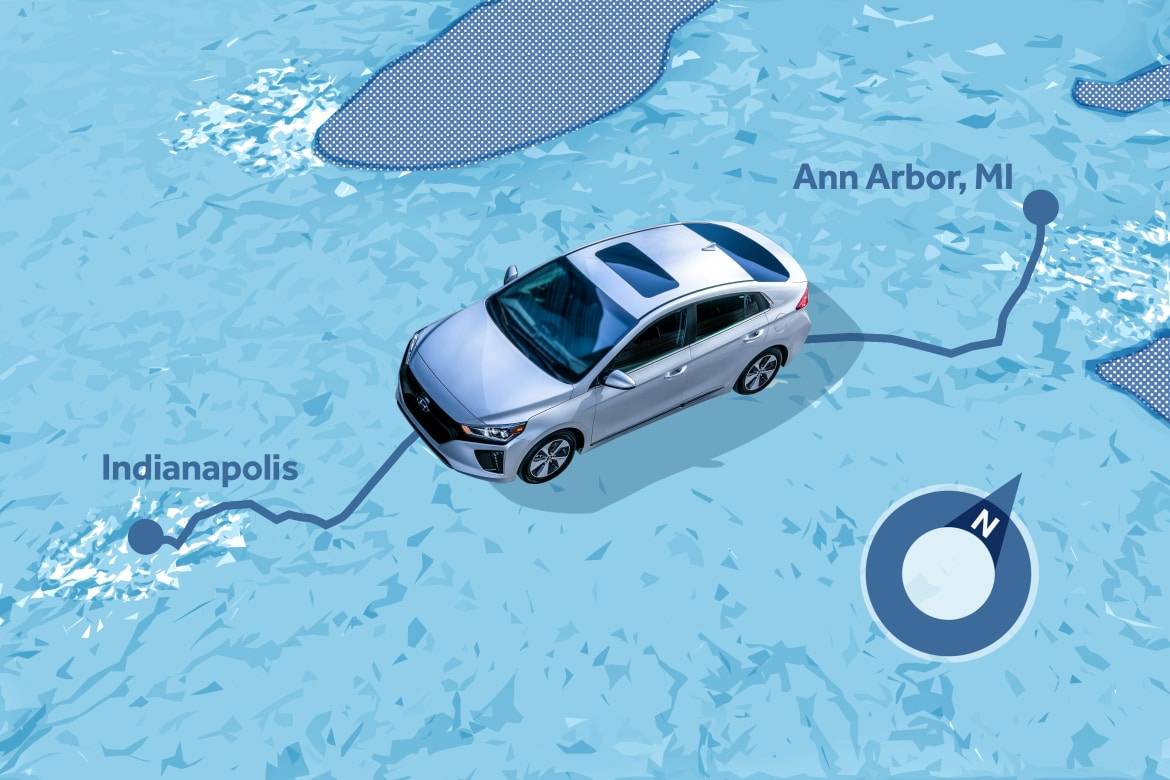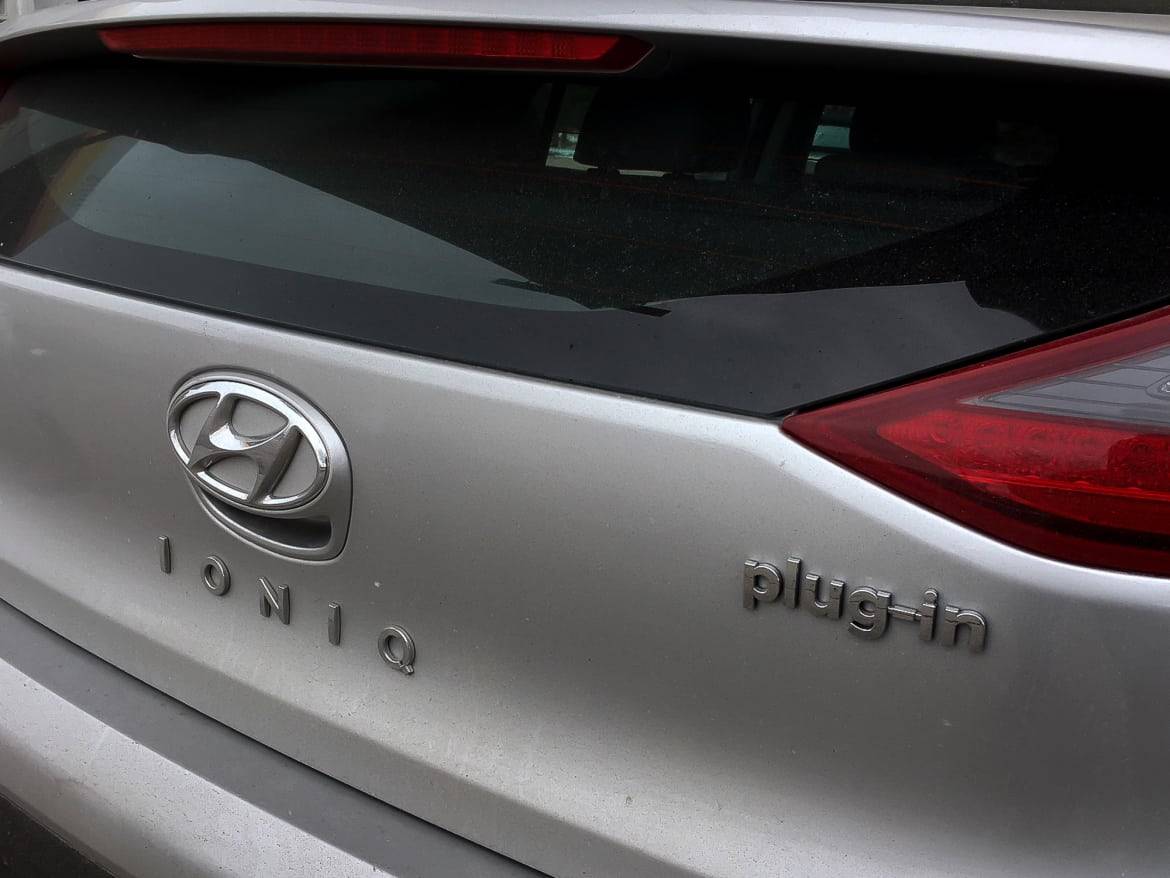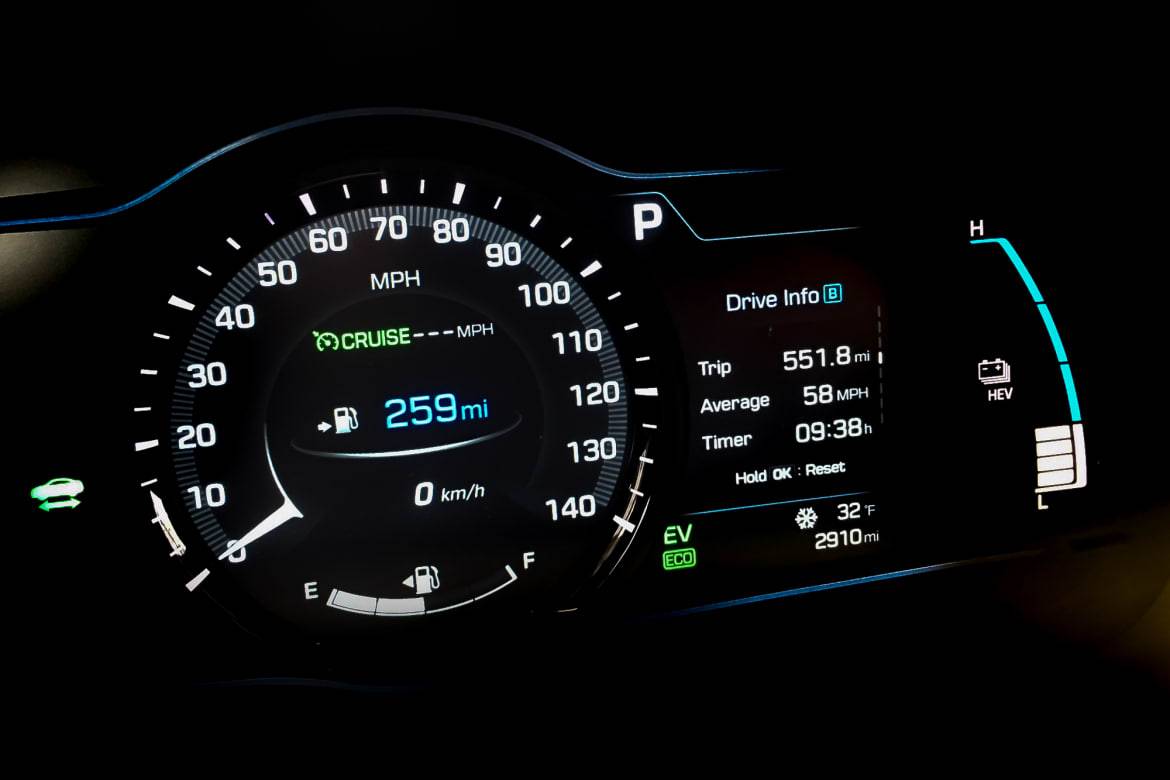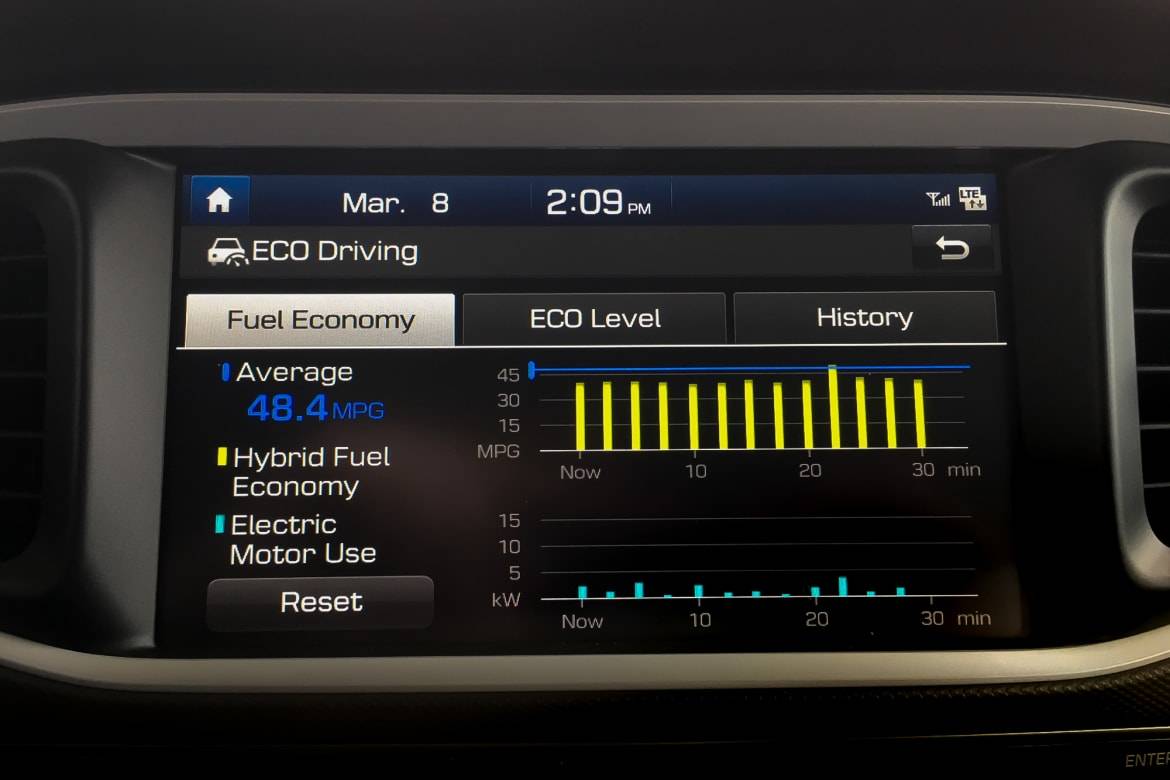2018 Hyundai Ioniq Plug-In Hybrid: Real-World Fuel Economy


Hyundai’s Ioniq popped onto the scene to challenge the Toyota Prius right at a time when people began losing interest in cars versus crossovers, and hybrids in general. When it goes fender-to-fender with a Prius, the Ioniq couldn’t be more different: It’s far more conventional-looking, a traditional hatchback with a split rear window that actually looks more like the last-generation Prius than the new Prius does.
Related: 2017 Hyundai Ioniq Hybrid Vs. 2017 Toyota Prius: Who’s the King of Fuel Economy?
Looks aside, it offers something that Toyota took years to bring to market — a plug-in hybrid version that bridges the gap between the battery-powered Ioniq Electric and the hybridized Ioniq Hybrid. The 2018 Hyundai Ioniq Plug-In Hybrid is something of the best of both worlds — it operates as a hybrid when it’s most efficient to do so, or as a full electric for a limited run of 29 miles before its gas engine kicks in.
Powertrain
The Hyundai Ioniq Plug-In Hybrid is a little different from other hybrid models. Like other hybrids, it combines a gasoline engine and an electric powertrain, but both are integrated with something unusual in a hybrid: a six-speed dual-clutch automatic transmission. Most hybrids use a variant on a continuously variable automatic, sometimes with simulated gear spacing, but Hyundai is using a transmission with actual gears instead.
The gas portion is a small, Atkinson-cycle 1.6-liter four-cylinder engine, while the electric motor is a 45-kilowatt unit making a combined 139 horsepower. The battery pack for the plug-in version is bigger than the one in the regular hybrid: It’s an 8.9-kilowatt-hour lithium-ion pack versus the 1.56-kWh unit in the normal hybrid, which is why it can drive 29 miles on electric power alone. The total range is an advertised 650 miles with a full charge and under ideal conditions.
The Trek
I drove one from Ann Arbor, Mich., to Indianapolis to attend the National Truck Equipment Association’s Work Truck Show, figuring this would be a good opportunity to test its real-world fuel economy. Now, admittedly, these are not ideal conditions under which to test a hybrid of any kind — highway speeds and freezing temperatures are the two biggest enemies of any electrified powertrain, so I wasn’t expecting to achieve the EPA-advertised numbers for the Ioniq — and I didn’t. But I still got an excellent idea of the capabilities of the Ioniq PHEV, as well as how it performs daily tasks and commuter duties.
Starting out from Ann Arbor on a 32-degree morning, I preheated the car while it was plugged into my house’s 240-volt charger to save on battery drain. The Ioniq PHEV will behave like any other plug-in with a gasoline engine in cold temperatures — if it’s sufficiently cold, it will run the engine to warm the cabin. The Chevrolet Volt is one of the few that don’t do that if you tell it not to, but you don’t have as much control over the Ioniq PHEV’s systems as you do in a Volt. The car will decide when the gas engine is needed, not you, the human. The initial screen read 27 miles of electric range available, and a total range of 527 miles, considerably less than the advertised 650 miles, but given how previous drivers had run it, the predictive range calculation told me I had less than expected.
The route from Ann Arbor to Indy is about 250 miles of easy, 70-mph two-lane highway. There was very little traffic and nothing in the way of road construction, so my average speeds were kept high. I stuck to the speed limit most of the way, employing cruise control as most drivers would — it smooths out throttle responses and generally improves fuel economy when you use it as intended.
Electric Experience
The electric powertrain ran out around 25 miles into the journey, not unexpected at highway speeds, but the vehicle will still run in electric mode with the engine providing battery power instead of actual propulsive force if need be. Still, no full EV driving is possible until you recharge the battery — the engine will kick on after you take off from a stoplight, for instance, or if you ask for more throttle than the electric powertrain alone can provide.
Driving the Ioniq Plug-In is a sedate experience — this may be one of the first vehicles with an electric-assisted powertrain that I’ve not found to be entertaining. It’s far more frequent-braking commuter than fast-wheels sports car and is on par with other plug-in hybrids that have added bigger batteries to their regular hybrid models for longer EV stints.
The Ioniq feels much the same as the Toyota Prius Prime, but it looks far more approachable inside and out. No weird spaceship styling here, and the interior packaging is far better, as well. So is the multimedia system, which is fully modern and features both Apple CarPlay and Android Auto. The Chevrolet Volt, by comparison, is a rocket ship with amazing low-end EV-style torque and better handling, but its powertrain isn’t a direct comparison — the Volt is primarily an electric car with a range-extending motor, while the Ioniq Plug-In is a gasoline-electric hybrid with a larger battery that you can charge from a plug.
Real-World Results
Overall, the trip to Indy and back covered 551 miles with an average speed of 58 mph. This includes some around-town city driving in Indy over two days, and two recharges of the battery pack so that the city commuting was done mostly in EV mode. The total gasoline used was 11.878 gallons, giving a calculated overall mpg of 46.5 mpg for the trip. Given the speed, weather conditions and the fact that I was using the Ioniq Plug-In Hybrid in a way that was not optimal for what it is, I’d call that favorable.
For better results, you need to use the Ioniq Plug-In Hybrid as a commuter car: Drive to work on EV power (provided you work less than 29 miles from home), charge it at work, drive it home on EV power and charge it there, too. Or maybe your round-trip is less than 29 miles and you can make it to work and back on EV power; the gas engine is meant for getting you the rest of the way should that battery run out mid-trip, and it allows you to actually take intercity trips like the one I did without fear of not finding a battery charging station on the way.
Given a choice between this and a Prius Prime, I’d pick the Ioniq, handily. It also bests the Chevy Volt in many ways, such as interior room, outward visibility and passenger accommodations. The Plug-In is just one of three flavors of Ioniq (the others being the normal hybrid and the full electric model), so if the shape and equipment suits your desires, there’s likely to be a model and MSRP to suit your needs.








Cars.com’s Editorial department is your source for automotive news and reviews. In line with Cars.com’s long-standing ethics policy, editors and reviewers don’t accept gifts or free trips from automakers. The Editorial department is independent of Cars.com’s advertising, sales and sponsored content departments.

Detroit Bureau Chief Aaron Bragman has had over 25 years of experience in the auto industry as a journalist, analyst, purchasing agent and program manager. Bragman grew up around his father’s classic Triumph sports cars (which were all sold and gone when he turned 16, much to his frustration) and comes from a Detroit family where cars put food on tables as much as smiles on faces. Today, he’s a member of the Automotive Press Association and the Midwest Automotive Media Association. His pronouns are he/him, but his adjectives are fat/sassy.
Featured stories








